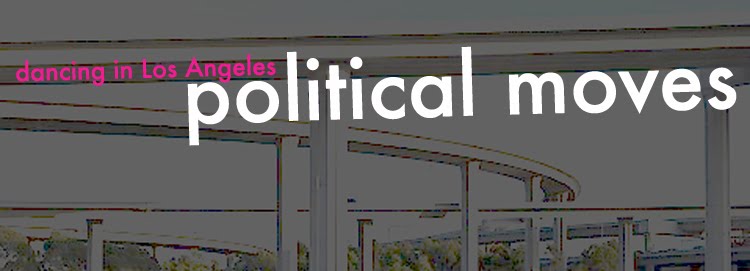
Inner City Arts and The Flourish Foundation
present
Versa-Style
Co-Artistic Directors:
Jackie "Miss Funk" Lopez
Lee "Breezelee" Foadd
Company:
Raymond Basa
Nina Flagg
Alli Gray
Michael Lor
Onisha Moore
Lilian Ortega
Diane Palaganas
Angelo Paulos
Harry Weston
Maya Zellman
Special Guests:
Marie "Pandora" Medina
Adrian "Lobo" Miramontes
DJ:
Stefan Ilea aka DJ Persyst
An announcement from company DJ Stefan Ilea, aka DJ Persyst, fills the space, “…the dancers need your energy, if you enjoy what you see please let them know…” to which the audience erupts with marvelous applause, hoots and hollers. It sounds like a dance battle or ball, something of a competition feeling.
- I will admit, the black queen in me slips out a sassy, albeit timid “work it,” before I’ve seen any of the dancing. Perhaps I have been watching too much of RuPaul’s Drag Race on Bravo. I digress.
Divided into 5 distinct parts, “Feel Our Rhythm” relies on a basic, yet effective, structure. Each section opens with an informative documentary-style video excerpt and is followed by various styles/techniques of choreography reflected in said video. Each section briefs us with, and entertains, hip hop’s flavorful history. The show opens with House Dance legend Marjory Smarth describing the beginnings of house dancing; an excerpt from the documentary Bhudda Stretch Street Styles. Iconic figures like the Nicholas Brothers and Fred Astaire smear the screen, reminding us of a genius past: rhythmically complex shuffling, swinging, tapping and digging, Cakewalk, Charleston and Black Bottom, New York dancing at its best, innovative and unyielding. Linked directly to these great masters (and the many others featured) we learn that house dancing developed in the clubs during the 70’s and 80’s as Hip Hop dancers came together, from various backgrounds, to celebrate and battle with the diversity of Hip Hop dance styles. Various social dance techniques from Samba to Salsa, disco to new wave; poppin’ and lockin’ to wackin,' boogaloo, ticking and waving – were being nurtured, blended and performed under one roof, one house.
Here is my disclaimer - I have to admit, I am not terribly experienced writing about hip hop choreography. My experience in creating conversations about contemporary modern dance and academic forms of concert dance-making has garnered attention around the small, yet budding contemporary dance community of Los Angeles. Nowhere in this repertoire of writing is a review of a hip hop show. Perhaps my fear of not knowing enough about hip hop, or not being skilled as a hip hop dancer is speaking for me at the moment. - Should I reveal this?
More interviews, including one of old-school lockin’ diva Ana “Lollipop” Sanchez, pave the way for one of the most exceptional dance sections of the evening. The women take the stage introducing us to a more flamboyant style of hip hop called wackin,’ choreographed by Nina Flagg. A sassy blend of vogueing and disco, wackin’ involves a constant flow of steps, turns and poses; a kind of cat-walking while the arms wack, smack and swing, framing the face through the constant flexion and extension of the elbows. Miming putting on make-up, primping of hair and giving shade accompany fierce sashaying, tight formations and diva behavior. Dressed in 80’s attire, the cast of women is fiercely dynamic, and Maya Zellman, Diane Palaganas and Flagg are killin' it.
- I went home and put on one of my off the shoulder numbers and practiced wackin’ for hours, imagining I was Jennifer Beals.
What I find to be most successful about "Feel Our Rhythm" are the ways in which each choreographic idea/segment transition into the next. Similarly to how the dj spins his records, sampling and cross fading, so do the style and content of the dancing. Basic house steps like jacking, skating and cross ball changing, with the assistance of light changes and new group formations, aid in the seamless transitions. Quick entrances and exits and spatial positioning of bodies, using foreground and background, create multiple moving images on the stage. It’s like watching a kaleidoscope changing shape, color and design with little effort. These transitions transport the dance through a haze of effortless historical storytelling, spanking our senses into raw enjoyment. It’s like a live music video, pulsing and driving, quick cutting and dissolving, right before our eyes. It is, in a matter of words, magical.
Lopez and Foadd have an incredible company with an impeccably talented group of dancers. It is a shame the show had a wee 3 day run. The city needs to see more of this work, not just to be entertained, but because of the rich history and service VersaStyle is providing the community.
Check out their company reel:
Check out their community class on House Dancing:

